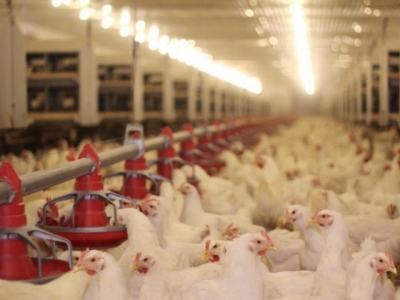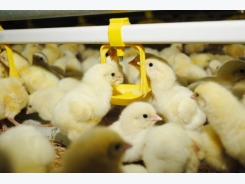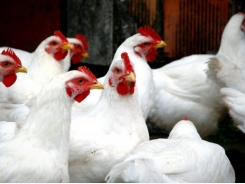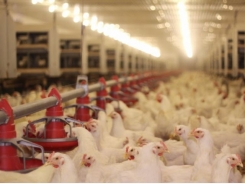Lactic acid bacteria may boost bird production in face of mycotoxin challenge

Adding supplemental lactic acid bacteria may diminish effects of aflatoxin contamination in poultry feed, say researchers.
An international team of researchers at Henan University of Science and Technology in China and the University of Georgia in the US examined the use of lactic acid bacteria (LAB) and hydrated sodium calcium aluminosilicate (HSCAS) in the diets of broiler chickens to reduce amounts of aflatoxin B1 (AFB1).
The group published its work in the journal of Livestock Science.
“The objective of the present study was to investigate the effect of LAB and HSCAS on detoxification of AFB1 by measuring growth performance, digestibility, immune function, and toxic residues in tissues and excreta,” the researchers said.
The researchers found that both feed additives were able to improve the digestibility of dry matter, crude protein, fat and digestible energy and modulated the weights of immune organs, lymphocyte percentages and immunoglobulin contents, they said.
Residual AFB1 also was found to be lower in birds receiving a supplemented diet.
“There were improved growth performance, digestibility, and immune function, and reduced deleterious effects and tissue residues of AFB1 in broiler chickens fed diets supplemented with the LAB or HSCAS,” the researchers said. “However, the improvement effects of LAB were more conspicuous than HSCAS.”
Why lactic acid bacteria and HSCAS?
Aflatoxin can be found in feed grains, said the researchers. The most toxic component is aflatoxin B1 (AFB1), which has been linked with reduced growth and health, metabolic disorders, hepatic disease and toxic residue in animal-based products.
Finding methods to counteractive the toxicity of AFB1 have become a priority in animal nutrition, they said. Use of clay absorbents like HSCAS have been commonly used in feed.
However, absorbents have some limitations related to nutrient loss and AFB1 residue in fecal matter has been known to cause secondary pollution to an environment, they said.
“With the deeper understanding of AFB1, microbial technology is desirable to biodegrade the toxic group into none or low toxic metabolites,” they said.
Lactic acid bacteria has been linked to improvement in gut microflora and used in animals, said the researchers. “Recently, it has been found that the LAB can be a natural biological antagonist against mycotoxigenic molds and their highly toxic metabolites,” they added.
Previous research found that LAB removed about 80% of AFB1 found in a liquid medium, they said. And it was found to inhibit the growth of Aspergillus flavus and to degrade AFB by 44-64% in a maize-based dough.
LAB strains found in poultry also demonstrated detoxification potential, they said. Lactobacillus plantarum and Lactobacillus paracasei were found to mitigate aflatoxins in mice, while Lactobacillus rhamnosus was able to limit AFB1 concentration.
However, little work has been done in farm animals to examine the effect of LAP on detoxification of AFB1 or to compare it to a more traditional detoxifier.
Methods and materials
In the feeding trial, three strains of LAB, approved for use as feed additives, were mixed and added to feed at 1.5x10^10 colony-forming units (CFU) per kg of feed, the researchers said. AFB1 was generated using the mold Aspergillus flavus in cornmeal – AFB1 concentrations were estimated to be 4,125 ug/kg.
The strains used included Lactobacillus acidophilus, Lactobacillus plantarum and Enterococcus faecium, they said.
Four diets were generated including a positive control and a negative control with 40 ug/kg AFB1 of feed, they said. LAB or HSCAS were added at 1.5 × 10^10 cfu/kg or 3.0 g/kg, respectively, they said.
In the feeding trial, 480 broiler chicks were given one of the four diets for a period of 21 days, they said. Birds and feeds were weighed weekly, feed efficiency was calculated and on days 19-21 total excreta were collected to check for digestibility and AFB1 content.
On day 21, sample birds were harvested, blood was collected and liver, kidney, spleen, bursa of Fabricius and the thymus gland were removed and weighed, they said.
Results
Overall, birds getting the negative control diet had reduced average daily gain (ADG) and gain:feed ratio, the researcher said. The ADG was increased by 8.6% for birds getting the LAB supplement and 5.8% in birds getting the HSCAS additive, the gain:feed ratio increased 6.8% and 5% for the LAB and HSCAS birds, respectively.
“The results indicate that LAB and HSCAS can detoxify AFB1 in the diet of broiler chickens, and LAB is more effective than HSCAS in partial biodegradation of AFB1,” they said.
Digestibility of dry matter, crude fat, crude protein and digestible energy dropped for birds on the NC diet compared to the positive control, however, those parameters improved for the birds on the supplemented diets, they said. LAB had more digestible energy, calcium and phosphorus.
Organ to body weight ratios for the spleen and liver were increased in the NC diet, while the ratio of Bursa of Fabricius and thymus gland dropped, they said.
“In LAB, the organ/body weight ratios of spleen and liver were reduced by 14.6% and 6.3%, respectively, but did not reach the levels of PC, and the organ/body weight ratios of Bursa of Fabricius, and thymus gland were increased by 10.4% and 5.2%, respectively,” said the researchers. “The effect of HSCAS on the organ/body weight ratios was similar to LAB treatment, except for the organ/body weight ratio of thymus gland.”
The amounts of T and B lymphocytes were lowest for the negative control birds, they said.
“AFB1 residues in the serum, liver, kidney, spleen, Bursa of Fabricius, and Thymus gland were decreased by 49.9–80.8% in LAB, whereas AFB1 residues were decreased by 44.3–65.9% in HSCAS,” they said. “The decreased effects on AFB1 were more pronounced in LAB than HSCAS. Additionally, AFB1 residue in excreta was decreased by 48.5% in LAB, but increased by 37.32% in HSCAS.”
Related news
Tools

Phối trộn thức ăn chăn nuôi

Pha dung dịch thủy canh

Định mức cho tôm ăn

Phối trộn phân bón NPK

Xác định tỷ lệ tôm sống

Chuyển đổi đơn vị phân bón

Xác định công suất sục khí

Chuyển đổi đơn vị tôm

Tính diện tích nhà kính

Tính thể tích ao




 Transmuting salvage grains into feed – do mealworms…
Transmuting salvage grains into feed – do mealworms…  Mushroom supplement may boost poultry meat quality
Mushroom supplement may boost poultry meat quality